Traditional Rugs
Traditional Persian Rugs
Traditional Persian rugs refer specifically to those Persian rugs that are made by weavers in various regions of Iran (formerly Persia).
These rugs are completely handmade by weavers who learn the art of weaving from their parents and grandparents. Weavers use only natural materials in their creations.
Many weavers obtain the wool from their own flock of sheep and dye it using dyes that they create from materials found in nature around them.
How Are Traditional Persian Rugs Made?
Traditional Persian rugs are entirely hand-knotted. Weavers may use a vertical or horizontal loom to work on their creations, painstakingly making one knot at a time to form the desired pattern. Depending on the size of the rug, the featured pattern, and the knot count, a weaver could take several weeks or even months to complete one rug.
7 Types of Traditional Persian Rugs
Tribal and village rugs are made by individual weavers in their own homes using their own designs. In the cities however, traditional rugs are made in workshops. These workshop rugs are made by several weavers who work on the same rug following patterns that are provided by the workshop owner. These rugs have less irregularities in the color and design as compared to tribal and village rugs.
Borders of Traditional Persian Rugs
The border is often the highlight of many traditional Persian rugs. Weavers pay special attention when designing this aspect, often creating spectacular borders to frame their creative patterns on the field of the rug.
While no two Persian rugs will have the exact same border, most will follow some sort of pattern.
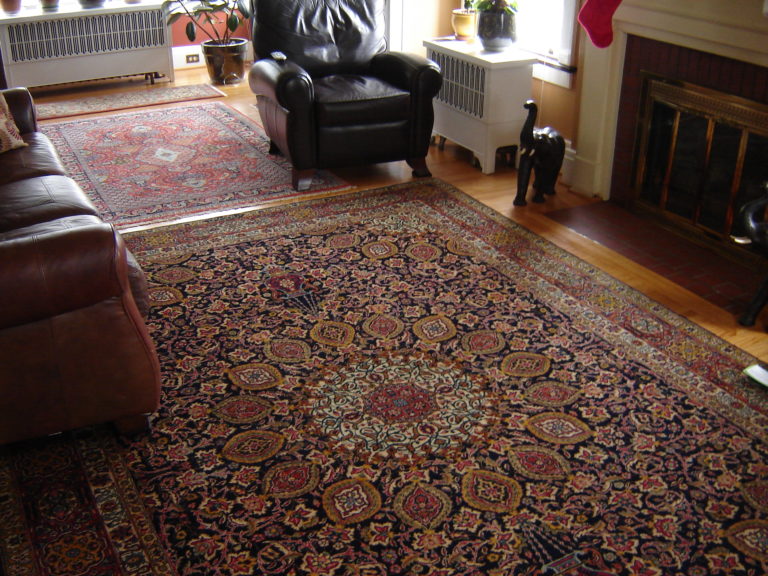
These are three of the most common borders featured in traditional Persian rugs:
Exterior Border – In this style a single stripe or multiple thin stripes in a solid color or made up of a small design. The stripe or stripes run around the rug’s edge, forming a narrow or broad border.
Principal Border – This style features a broad, prominent border just inside the outer border with detailed designing woven in between the two.
Weavers really express their creatively when designing the principal border. Some weavers use colors and design elements that complement the overall rug design. Others use colors and designs that contrast with the rug design.
Secondary Interior Border – This style features the principal border, with an additional thin border added on the inner side. Although the structure is similar, weavers use their own unique combinations of colors, designs and thickness, resulting in endless variations.
Designs of Traditional Persian Rugs
It’s hard to pin down a specific design that’s characteristic of all traditional Persian rugs. Rugs from different regions use completely different design elements. Even rugs from the same region differ widely depending on the weaver’s unique vision and interpretation of that vision.
Despite all of these different styles, one pattern that has remained hugely popular across all rug styles is the classic all-over design. To create this pattern, the weaver chooses one basic design. This design is then repeated over and over again across the field of the rug in a repeating series of patterns that the weaver chooses. It’s a simple yet brilliant concept that can give rise to endless designs, each one unique and equally spectacular.
There is a special significance to this design style. The repetitive patterns do not have a definite end. They keep going till they read the rug edge where they end abruptly. This creates a profound and powerful sense of infinity.
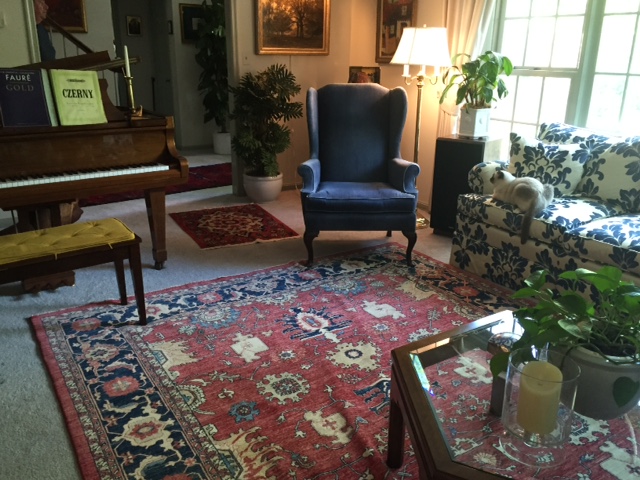
Decorating With Traditional Persian Rugs
Use your traditional rug as an accent piece – The elaborate patterns and bold striking colors of traditional Persian rugs make them perfect for use as eye-catching accent pieces that can either complement or contrast with the existing décor in any room.
Use your traditional rug to liven up negative spaces – Using traditional Persian rugs can inject much-needed style, character and color to negative spaces such as the hallway, foyer or the sides of your bed.
Here Are A Few Of Our Favorite Types Of Traditional Persian Rugs:
Tabriz
Tabriz are high quality city rugs. They usually have a wool pile on a cotton foundation with a relative high knot count that ranges from about 120 KPSI to 850 KPSI. The wool used is of superior quality.
Older Tabriz rugs feature bold red or blue patterns set on an ivory background. The high contrast between the designs and background creates a dramatic effect. New Tabriz rugs have softer shades of blues, greens, and browns to cater to more modern trends.
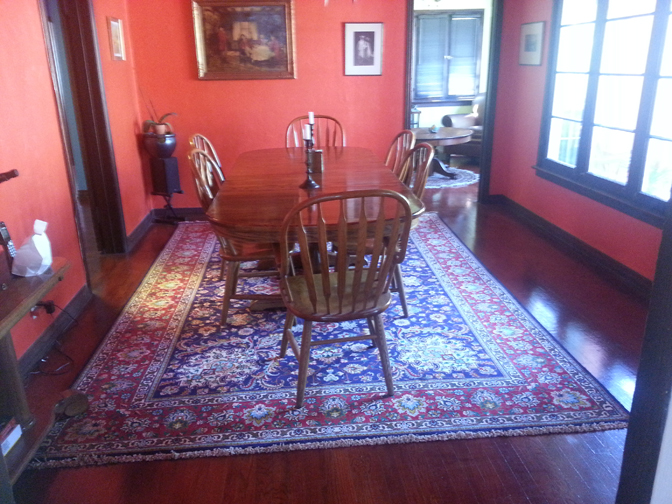
Kashan
Kashan rugs are hugely popular because of their high quality and attractive designs. These rugs have a cotton foundation and the tightly knotted pile may be made of wool or silk.
The characteristic design featured in Kashan rugs is a red field with ivory and navy borders that showcase a large, showy medallion in the center. While the design structure is similar in most Kashans, every weaver creates their own variation of the basic design so no two rugs ever look the same.
The knot count of a Kashan rug can range from about 100 KPSI to 800 KPSI.
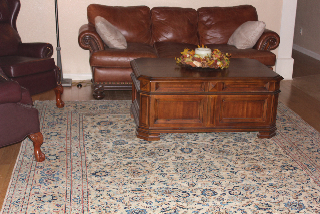
Mashad
Mashad rugs are made using superior quality wool on a cotton foundation. These rugs have a thin, tight pile and a knot count of about 120 KPSI to 475 KPSI. A common design seen in Mashad rugs is a single medallion in the center of the field surrounded by curvilinear patterns and floral designs at the corners.
Blue, red and khaki colors are the main colors used to create these patterns with other colors used sparingly in between.
Sarouk
Sarouk rugs are easily identifiable by their bright bold colors, usually strong shades of blue, red, black, and burnt orange offset by ivory or champagne.
These rugs feature either curvilinear or geometric patterns and have an average knot count that ranges from 120 KPSI to 450 KPSI. The medium cut, high quality wool pile is built on a cotton foundation.
Bijar
The unique construction of Bijar rugs sets them apart from most other types of traditional Persian rugs. These rugs are constructed using two wefts of different thicknesses. The pile is made compact by beating down the thicker weft tightly between rows of knots.
The result is a stiff, heavy rug with a dense pile that stands upright. The wool pile is built on a cotton or wool foundation. Bijar rugs are extremely durable.
Nain
Nain are high quality rugs. The foundation is usually made of cotton, and the pile may be made of superior quality, soft wool, a wool and silk mix or only silk. Most Nain rugs will have at least some silk in the detailing. The knot count is about 300 KPSI.
Nain rugs typically feature the Shah Abbasi design created in shades of blue, brown, beige and grey with orange, green and yellow used very sparingly as accent shades.
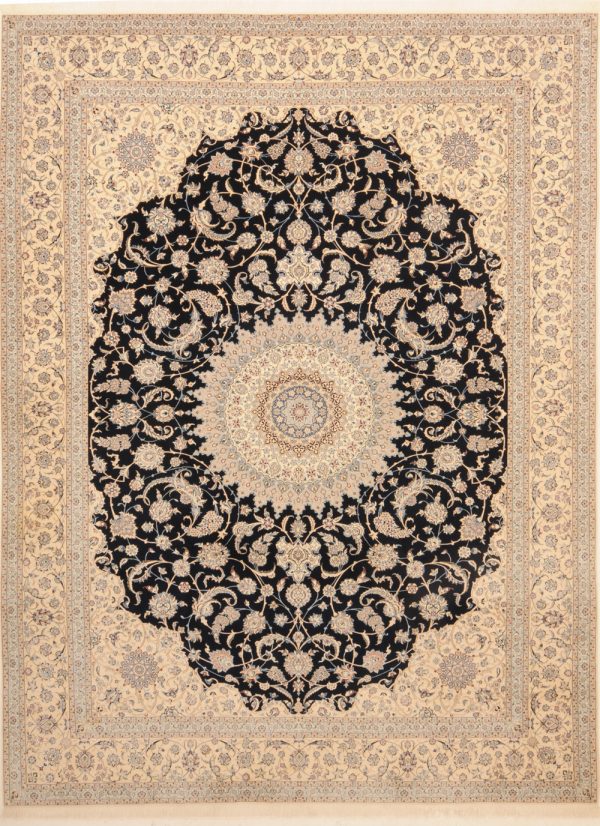
Related Categories
Oriental Rugs | Persian Rugs | Wool Rugs | Silk and Wool Rugs | Antique Rugs